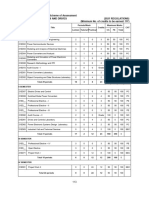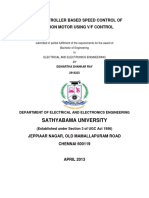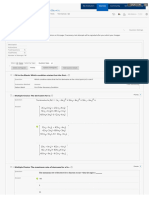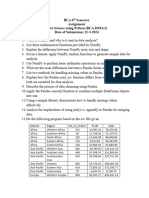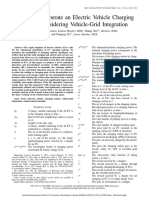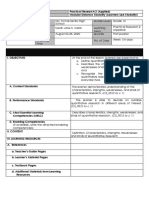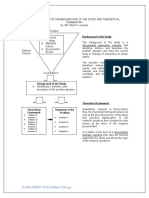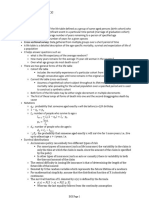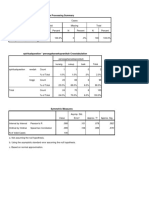100% found this document useful (1 vote)
144 views14 pagesBLDC Motors in Aerospace Applications
The document discusses research on using a brushless DC (BLDC) motor to control the moving doors of commercial aircraft cabins. It begins with background on the development of electric motors and advantages of BLDC motors. It then discusses using BLDC motors for aircraft applications due to their high efficiency and reliability. The proposed research will investigate speed control methods for the BLDC motor driving the aircraft cabin doors, such as PI and fuzzy logic controllers, to ensure safe and reliable door operation. A literature review on previous BLDC motor applications is also planned.
Uploaded by
annaCopyright
© © All Rights Reserved
We take content rights seriously. If you suspect this is your content, claim it here.
Available Formats
Download as DOCX, PDF, TXT or read online on Scribd
100% found this document useful (1 vote)
144 views14 pagesBLDC Motors in Aerospace Applications
The document discusses research on using a brushless DC (BLDC) motor to control the moving doors of commercial aircraft cabins. It begins with background on the development of electric motors and advantages of BLDC motors. It then discusses using BLDC motors for aircraft applications due to their high efficiency and reliability. The proposed research will investigate speed control methods for the BLDC motor driving the aircraft cabin doors, such as PI and fuzzy logic controllers, to ensure safe and reliable door operation. A literature review on previous BLDC motor applications is also planned.
Uploaded by
annaCopyright
© © All Rights Reserved
We take content rights seriously. If you suspect this is your content, claim it here.
Available Formats
Download as DOCX, PDF, TXT or read online on Scribd
/ 14


























